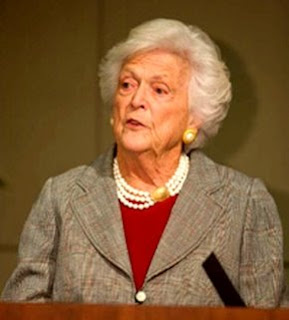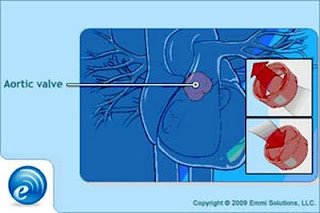Treasury Secretary Tim Geithner Opening Statement
– As Prepared for Delivery
– Senate Finance Committee Hearing
Chairman Baucus, Ranking Member Grassley, and members of the Committee, thank you for providing me the opportunity to appear before you today to discuss the President's Budget at this moment of economic crisis, but also of real possibility, for the United States.
What I propose to do in the remarks that follow is to:
*
Describe the economic and financial challenges that greeted us upon our arrival in office, and discuss how we are addressing them;
*
Lay out the intermediate and long-term threats to our fiscal condition, and explain how the President's Fiscal Year 2010 Budget will return the nation to a sustainable fiscal position; and
*
Explain how this Budget puts the nation on a path towards energy independence, better educational outcomes, and a reform of health care that both lowers costs and expands access.
Current Economic and Financial Challenges
The economy suffers from a severe lack of aggregate demand, both from families and businesses – a problem that is driven by a slumping job market, where 3.6 million jobs have been lost in just over a year – the largest number as a fraction of total employment in more than a quarter century and the largest number in absolute terms in over a half century. This problem is made worse by a contraction of demand from many of our key trading partners.
Businesses, facing or projecting fewer customers for their goods and services, are laying off workers or cutting back on their hours or wages, causing families to further reduce their demand and businesses to respond with more layoffs and cutbacks.
This dynamic is made worse by a financial system that is unable to provide the credit necessary for recovery. You can see this across America as families find it difficult to get the financing they need to buy new houses and cars while businesses have trouble lining up the credit necessary to meet payroll.
The contraction in credit is causing more job losses and further declines in business activity, which, in turn, is adding more pressure on the financial system.
Both our economic and financial problems are being compounded by problems in our housing market, where a record 2.5 million families faced foreclosure last year, undercutting overall home prices, shrinking Americans' real estate wealth by $2.8 trillion from its peak, causing further reductions in demand, more layoffs and a greater credit squeeze that threatens another round of foreclosures.
You can see the scale of the damage in last Friday's announcement that the Gross Domestic Product, the broadest measure of the nation's output of goods and services, dropped at a 6.2% annual rate during the final quarter of last year. That was its worst performance in more than a quarter century, and the third worst in more than a half century.
In addition to a deepening recession and financial troubles, the Obama Administration inherited the worst fiscal situation in modern American history, with a federal budget deficit of $1.3 trillion, equal to nearly 10% of GDP – the largest that the nation has faced since World War II – not counting the economic recovery or other legislation undertaken by the Obama Administration.
And we begin our time in office after a long period in which our government was unwilling to make the long-term investments required to meet critical challenges in health care, energy and education.
This is the reality that we face today. These are the challenges that shape both the American economy and the Administration's strategy. I want to outline for you today the President's program for addressing these challenges.
Let me start with our immediate response to the acute problems confronting the country.
A Comprehensive Economic Recovery and Financial Stability Plan
Economic Recovery Plan
Immediately upon taking office, the President and the Administration worked with Congress to enact the American Recovery and Reinvestment Act, a package of targeted investments and tax cuts designed to get Americans back to work and get the economy growing again.
Every agency of government is moving quickly to implement the recovery plan in order to reignite economic growth. In the last week alone, we introduced three of the plan's major tax provisions–the Making Work Pay tax credits of $400 a year for individuals and $800 for working families; a first-time homebuyer credit that could get up to $8,000 into the pockets of those buying homes before December 1, 2009; and a subsidy to ensure that unemployed Americans and their families can keep their health insurance.
We estimate that the plan will save or create at least 3.5 million jobs over the next two years, and will boost GDP – over where it would have been had we not acted – by almost 1% this year and more than 3.2% next year.
Financial Stability Plan
But reviving economic activity is not enough because without a regular flow of credit to families and businesses, recovery will be impeded. Therefore, we have taken another critically important step.
We have introduced a Financial Stability Plan to get our financial system operating so that it promotes recovery rather than prevents it, by supplying the necessary credit for Americans to once again buy homes, purchase cars, go to college and turn good ideas into flourishing firms.
The stability plan will ensure that banks have the capital cushions they need to keep lending under currently troubled economic conditions and, as a precaution, under even worse conditions as well. It will help thaw our important, but now largely frozen, non-bank financial markets so they can go back to generating the credit that families and businesses must have. And it provides a method for the government to join with private investors to begin buying the mortgage-backed securities at the center of so many of the financial system's problems, but whose resumed trading is so important to the stability of the system.
Homeowner Affordability and Stability Plan
Just as economic recovery requires financial stability, stabilizing our financial system requires us to improve conditions in our housing market.
The Administration's affordability plan will help all Americans buy and refinance their houses by encouraging low mortgage interest rates. In addition, it will offer to help 4 to 5 million homeowners to refinance. And it will help another 3 to 4 million homeowners who are at risk of foreclosure through no fault of their own to convert their unaffordable mortgages into affordable ones.
These three plans form our immediate and integrated response to the nation's economic and financial challenges. All three are carefully linked to our 2010 Budget.
The Budget: A Plan for Fiscal Sustainability and Investments for Shared Prosperity
The President's Budget carries forward and expands upon our immediate response to the acute problems confronting America.
It also marries these efforts to an honest plan for how to proceed after recovery has taken hold and the financial system has stabilized. It lays out how to achieve long-term deficit reduction by reversing the short-term increases that are now necessary to achieve recovery and stability – increases that will have to be substantially reduced in order to get the nation back into fiscal shape. And it provides a blueprint for the investments in health care, education and energy that are so critical to our long-term future.
Budget Honesty
The President's Budget begins by offering an honest assessment of the dimensions of the problems facing the country in the intermediate and long-term.
The President's Budget ends the practice of only recognizing the costs for overseas contingency operations – such as the wars in Iraq and Afghanistan – for as little as one year at a time and instead acknowledges that there is multi-year cost that must be reflected in the Budget. Although the budget includes estimated costs of these operations in the out-years to be fiscally conservative, these estimates do not reflect any specific policy decisions. Several strategy reviews are underway that will inform out-year costs, and it would be premature at this time to prejudge those reviews.
It takes into account the possibility of a natural disaster such as Hurricane Katrina, instead of assuming that the country will be free of such disasters and the costs of helping Americans put their lives and communities back together.
It ends the practice of assuming an increase in revenues from the Alternative Minimum Tax (AMT). The AMT has been "patched" year after year, but for the first time our Budget reflects the cost of doing so.
It acknowledges that, as expensive as it already has been, our effort to stabilize the financial system might cost more. It establishes a placeholder to help ensure we can cover any additional financial stability costs.
I should note here that the existence of the $250 billion placeholder for financial stability in the President's Budget does not represent a specific request. Rather, as events warrant, the President will work with Congress to determine the appropriate size and shape of such efforts, and as more information becomes available the Administration will estimate potential cost.
Finally, the President's Budget gives a fuller view of the government's finances by looking out ten years, rather than the five years which has been the practice with budgets in recent years.
Reducing the Deficit to Return to Fiscal Sustainability
We have set an ambitious, but economically crucial goal for bringing our deficits down dramatically once the recovery is firmly established and financial stability has returned.
We project that the deficit for the current fiscal year, including the recovery and stability plans, will be $1.75 trillion, or 12.3% of GDP. Of that, $1.3 trillion, or 9.2% of GDP, was already in place when we assumed office.
The President is determined to cut this $1.3 trillion deficit by at least half in four years. The budget would bring the deficit down to $533 billion by fiscal year 2013. More importantly, it would reduce the deficit to about 3% of GDP.
By bringing the deficit down to the range of 3% of GDP, we can keep our national debt – the aggregate total of our past deficits – from growing faster than the economy itself and keep the size of our debt relative to the economy from rising towards the end of our ten year budget window.
Failure to reduce deficits to this level would result in higher interest rates as government borrowing crowds out private investment, leading to slower growth and lower living standards for Americans.
Key Revenue Provisions in the President's Budget
Our revenue provisions are designed to encourage growth and recovery, improve the fairness of the tax code and support the President's critical priorities in a fiscally responsible manner.
Our recovery plan reduces the overall tax burden on the American economy to help get the economy back on track.
The President's Budget takes up where the recovery plan leaves off, cutting taxes for 95% of working Americans by making permanent the Making Work Pay tax credit of up to $400 for individuals and $800 for families. The Budget provides additional tax relief by expanding the earned income tax credit for lower-income families and extending the American Opportunity Tax Credit that provides up to $2,500 toward higher education. All of these are in the recovery plan that Congress enacted last month, but only in temporary form. The Budget also expands the Saver's Credit as part of the President's commitment to help Americans rebuild their savings.
The President's Budget includes tax provisions to help small businesses. It recognizes that many small businesses are operated as sole proprietorships or through partnerships and other flow-through entities, and leaves the individual income tax rates at which these small businesses are taxed unchanged in 2009 and 2010. By extending the current rate structure for families earning less than $250,000 after 2010, it ensures that 97% of small businesses will receive additional tax relief at that time or see their rates remain unchanged.
Moreover, the President's Budget will provide small business owners with a new zero capital gains rate on new investments in their businesses, which should help them plan for expansion and succession.
In addition, the budget will help provide more incentives for innovation and increase stability in the tax code by making the Research and Experimentation tax credit permanent.
By 2011, when the economy is projected to have recovered, it will be important for the nation to put in place policies that restore fiscal responsibility. For this reason, our Budget includes revenue changes that become effective at that time. Those making less than $250,000 will not see taxes increase. The marginal rates for the top 2% of income earners will return to where they were during the powerful economic expansion of the 1990s.
The Budget also seeks to restore fairness to the tax code. For example, the Budget proposes to tax the compensation paid to hedge fund managers, private equity partners and others in the same way that we tax the wages paid to ordinary American workers. By closing this "carried interest" provision, the tax code will provide equal tax treatment for wages regardless of whether an individual works as a teacher or a hedge fund manager.
The Budget addresses the serious issue of the "tax gap," the difference between what taxpayers legally owe and the amount that they pay. Building on the recently enacted proposals to increase information reporting, the Budget includes a new proposal to require additional information reporting for rental property expense payments. We will make additional information reporting proposals when the full Budget is released.
The Budget also seeks to close the "tax gap" by tackling tax shelters and other efforts to abuse our tax laws, including international tax evasion efforts.
The Budget addresses the use of offshore structures and accounts by U.S. corporations and individuals to avoid and evade U.S. taxes. Over the next several months, the President will propose a series of legislative and enforcement measures to reduce such U.S. tax evasion and avoidance.
Some proposals will focus on the rules in our tax code that put those who invest and create jobs in the United States at a disadvantage. We will propose rules to both reform U.S. corporations' ability to defer foreign earnings and deter high income individuals and corporations from using tax havens to avoid taxation.
Path to Prosperity: Investments in Health Care, Education and Energy
The President's Budget will put the nation back on a sustainable fiscal path that is so important for long-term growth. But the Budget is about much more than deficit reduction. In it, the President reverses our government's long neglect of critical investments in health care, education and energy in order to improve the economy's performance and lift the standard of living of this generation of Americans and of future generations.
Investing in Health Care
Without a plan to reform and bring down costs throughout our entire health care system, budget deficits will start climbing again as the costs of Medicare and Medicaid increase with rising overall health system costs. And we will not have taken a single step toward the time when every American – no matter their income – receives the quality, affordable health care they deserve.
In recent years, most proposals for how the government should cope with its rising health care costs have centered on trying to hold the growth of Medicare and Medicaid costs below that of the overall system. But there is wide agreement among experts that this is not a long-term solution for containing health care spending.
Any effort to slow the growth of Medicare's and Medicaid's costs requires slowing down the costs of the overall system and that, in turn, is helped by substantially expanding access to care. To do otherwise would result in economically distorting cost shifts, where those who are covered end up paying higher prices to pick up the medical tabs of those who are not.
That's why this President is committed to achieving a goal that has eluded presidents since Franklin Delano Roosevelt, which is to reform America's health care system to make it less costly, more comprehensive and fairer.
We already have made a down-payment on this effort by including over $20 billion for health information technology, comparative effectiveness and prevention in our recovery plan and by extending and expanding the Children's Health Insurance Program for eleven million children.
The President's Budget will greatly advance that effort by setting aside a reserve fund of more than $630 billion over ten years to help finance reforms. The fund will be financed on a roughly 50:50 basis from new revenues from those Americans who can best afford this sacrifice and health system savings associated with, among other things, reducing drug prices by speeding access to affordable generics.
Investing in Education
Without the President's new investments, we risk leaving a generation of workers unequipped to compete in the 21st century's global economy. In order to ensure that our workers are prepared to compete and that the economy can continue to grow, we must increase the number of Americans who have the opportunity and ability to earn a college degree.
This is particularly important because of the projected slowdown in the growth of our labor force over the coming decades. And it is particularly important for those in our society – such as those from minority and lower-income families – who have traditionally had lower rates of college success.
In this light, the higher education provisions in the President's economic recovery plan are essential to our long-term economic strategy because during periods of economic stress, the students who are most likely to drop out or never attend college are those for whom cost is the biggest barrier.
The President's Budget includes substantial strides towards ensuring that a college education is affordable for all Americans. The American Opportunity Tax Credit will provide up to $2,500 a year of tax relief for a student going to college. The combination of the partially refundable nature of the credit and a sizeable increase in the maximum Pell Grant to $5500 a year embodies the President's commitment to ensuring young people at all income levels can obtain a college degree.
At the same time, the President's Budget ensures that more young adults will be ready for college by starting them on the right track in early childhood.
The President's commitment to quality early childhood education reflects the belief of experts ranging from child psychologists to the Minneapolis Federal Reserve and Nobel Prize-winning economist James Heckman that these programs are among the highest-paying investments not only for children, but for the economy as a whole. That is why the President's Budget includes measures to help states improve their early education programs, along with funding to expand Head Start and double the number of children in Early Head Start.
Investing in Reducing America's Dependence on Foreign Oil
Without the President's new investments, the nation will remain dependent on uncertain supplies of foreign oil and carbon-intensive energy – a dependence that threatens our economy, our environment and our national security.
The President's energy investments reflect our efforts to use broad-based market incentives to move us as efficiently and as quickly as possible towards a clean energy economy, while also providing relief to those who may bear a temporary increase in expenses during that transition.
The recovery plan includes $65 billion in investments in clean energy technologies for programs like creating a smart electricity grid, improving energy efficiency, and investing in green jobs. As the President has made clear, we will work with Congress to develop an economy-wide emissions reduction program to bring emissions down approximately 14% from 2005 levels by 2020 and approximately 83% from 2005 levels by 2050. This program should include a 100% auction of emissions allowances – ensuring that the biggest polluters don't profit on the basis of past pollution – and should use a cap-and-trade system that has worked effectively in the past as a mechanism to combat acid rain.
The funds raised through this auction could be used to invest an additional $15 billion a year in clean energy technologies. It would also go towards covering the cost of making the Making Work Pay tax credit permanent, providing 95% of American families with tax relief. If there are any additional revenues, those could go back to the American people, with a focus on compensating vulnerable communities, businesses and families.
The government will set the example by, among other things, retrofitting its buildings in order to improve their overall efficiency and save taxpayers billions of dollars.
In all of the President's Budget proposals, as in our recovery, stability and affordability plans, we will make good on the imperatives set by the President to operate in the bright light of day so that taxpayers can know how their money is being spent and can hold us accountable.
The problems that confront this nation are daunting. But we are a strong and resourceful country. Faced with great challenges in the past, we have shown the will to overcome adversity and carve a path back to prosperity. We will do so again.
A budget is about more than columns of numbers and trend lines across a page. This Budget embodies our values, our aspirations, and our will to overcome the current crisis and usher in a new prosperity.
I look forward to working closely with you in this great endeavo

















